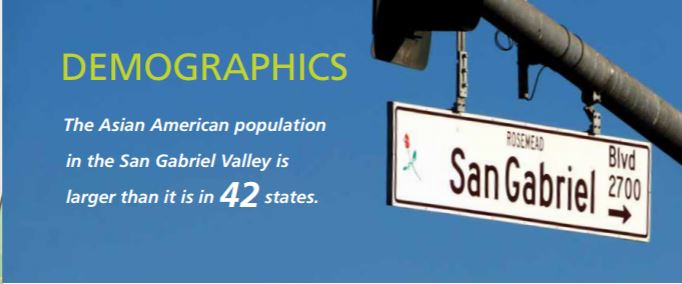
By Promise Li
AsAmNews Guest Contributor
While Los Angeles county has the largest and fastest-growing Asian American population in the United States, a recent report by non-profit legal center Asian Americans Advancing Justice-Los Angeles (AAAJ-LA) revealed that, between 2007 and 2011, the number of unemployed Asian Americans rose by nearly 90 percent.
These statistics may paint a less rosy picture of San Gabriel Valley, which is conventionally portrayed as a suburban haven for more affluent Asian Americans and Pacific Islanders. But with over a third of Los Angeles county’s Asian American population, the San Gabriel Valley is far more economically diverse than most would like to admit.
And by diverse, I mean the already-existing and growing low-income population of Asian and Latinx populations that exist side-by-side with middle-class families and wealthier Chinese nationals. Median household incomes and options for home ownership continue to decrease; all the while, unemployment has doubled and demand for social services is ballooning.
In San Gabriel Valley, behind the model minority myth and the facade of a thriving hub for Chinese and Taiwanese culture lies a bubbling swath of the young and urban working-class, from new developments in Monterey Park to the vast stretch of eateries and boba shops along the freeways. They are a class of Asian Americans and Pacific Islanders who are unable to afford independent housing and further burdened by limited job opportunities or crippling student debt.
LATEST STORIES
The Valley’s social issues cannot be separate from the woes of Los Angeles’s Chinatown. Currently stricken by the effects of gentrification, Chinese and other Asian Pacific Islander communities from CHinatown are looking eastward, not only to preserve their sense of culture, but to find a decent and affordable place to live. The last decade has seen many former Chinatown residents relocate to the San Gabriel Valley, among other areas, in the face of negligent landlords and unrestrained rent increases (the market price for a one-bedroom apartment in Chinatown is now over $2,000). Some of those who stay continue to work long hours in mostly the home-care and service industries to cover their skyrocketing rents — trekking the hour-long commute to places like the Valley.
The need for an Asian and Pacific Islander-led progressive movement to organize these communities is relevant now more than ever. Various community programs, such as the Asian Youth Center in San Gabriel, have done tremendous work in providing needed care and services to marginalized sectors of the population. But the need persists for a grassroots and community-led movement that addresses the intersecting issues of race and class. Most notably, the Chinese Progressive Association’s attempt to build a branch in San Gabriel Valley in the early 2010’s was valuable, albeit short-lived.

The severe challenges to organizing a left presence are apparent to anyone who know or has lived in the community. With one of the most effective organizing forces in the area being Chinese and other Asian evangelical churches, the Asian community in the San Gabriel Valley are most politically known for their consistent support for right-wing causes, from anti-gay marriage protests to NIMBY pressures against affordable housing, most recently in Temple City.
But today, Los Angeles county is amid a surge of progressive organized movements from the Asian American community, like the Progressive Asian Network for Action (PANA). As evident in the wide reach of Bernie Sander’s campaign for presidency two years ago, the Democratic Socialists of America are on the rise. This national trend bodes well for local chapters of socialists and radical organizations surface in San Gabriel Valley; most recently, the increasing need for affordable housing and rent control has compelled local activists to build significant presence in cities like Pomona and Pasadena.
Still, there’s untapped potential: how can a grassroots radical movement engage with a significant force in town, the Asian American population? Despite the increasing presence of Asian American service workers and home-care workers, it seems like a stretch to suggest that they are progressive, and organized en masse.
Mass movements for progressive social change begin with people on the ground who are open to listen to each other’s material concerns: wage theft, long hours, crappy bosses, shady landlords, poor working and living conditions, etc. Radicalized and progressive college students, from diverse colleges like many of the state’s public universities and community colleges, may help provide this political direction for a new, radical movement.
AsAmNews has Asian America in its heart. We’re an all-volunteer effort of dedicated staff and interns. Check out our Twitter feed andFacebook page for more content. Please consider interning, joining our staff or submitting a story.







